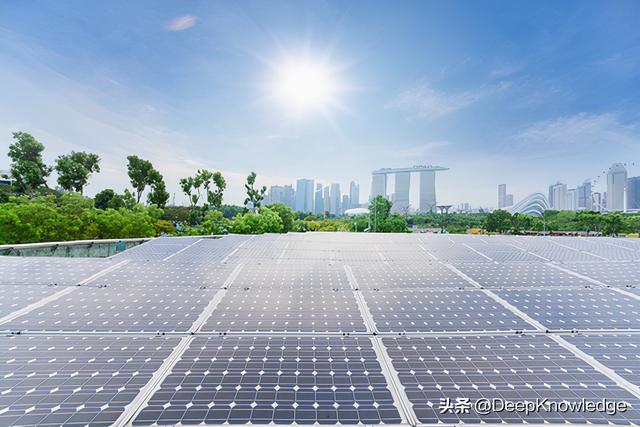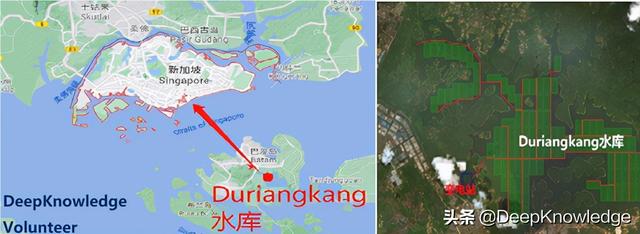新加坡數據中心可持續發展之路
Singapore’s sustainability drive
新加坡在科技和可再生能源的探索研究,爲各國數據中心走向可持續發展之路提供了很好的借鑒。
Research in technology and renewable energy in Singapore could blaze a path for more sustainable data centers around the world
October 14, 2021 Paul Mah
受到日益嚴重的環境問題、熱帶氣候和激增的數字需求的推動,新加坡數據中心消耗了全國 7% 的電網電力,必須直面挑戰。新加坡目前已暫停新建數據中心審批,並加速對節能型數據中心和可再生能源的研究和投資。
Pushed against the wall by growing environmental concerns, a tropical climate, and surging digital demand that sees data centers gobble up seven percent of the country’s grid power, Singapore has laid down the gauntlet. It has enforced a moratorium on new data centers and accelerated research and investments into energy-efficient data centers and renewable energy sources.
– Getty Images
盡管這些計劃稍顯狹隘,但所制定的技術創新和路線圖很可能爲世界各地-不僅在熱帶氣候中實現更可持續的數據中心指明了方向。
But while the plans are decidedly self-serving, the technology innovations and roadmaps wrought could well blaze a path for more sustainable data centers not only in tropical climates but also around the globe.
捉襟見肘
Limited options
應對長期冷卻熱數據中心這一挑戰的傳統方法,是將其建造在溫度較低的地方,或容易獲得可再生能源的地方。但新加坡全年氣候炎熱潮濕,而且明顯缺乏可再生能源選項。
The traditional approach to tackling the challenge of cooling hot data centers sustainably is to build them in places where the temperature is cold, or locations with easy access to renewable energy. But Singapore has a year-round climate that is both hot and humid – and renewable energy options are also decidedly lacking.
新加坡國家氣候變化秘書處 (NCCS) 在其網站上列出了這個問題,指出目前幾乎所有替代能源來源都不可行,因爲缺乏快速流水(水電)、低平均風速(風電)和窄潮差(潮汐發電)。唯一可行的選擇就剩太陽能,但即便如此還受到高雲層覆蓋和大規模部署太陽能電池板所需土地有限的阻礙。
The Singapore National Climate Change Secretariat (NCCS) set out the problem on its website, noting how practically every source of alternative energy is not currently viable, from a lack of fast-flowing water (hydroelectric), low average wind speed (wind), and narrow tidal range (tidal power). The only viable option is solar power, though even that is hampered by high cloud cover and limited land for large-scale deployments of solar panels.
對于數據中心行業而言,可持續性的有限選擇極大地簡化了決策。在排除不確定解決方案(例如安全核能、利用 LNG 冷能冷卻數據中心以及進口低碳氫)之後,僅剩下兩個近期選擇:提高數據中心能源效率並加倍開發太陽能。
For the data center industry, the limited options for sustainability greatly simplified the decision metric. After discounting uncertain solutions – such as safe nuclear energy, harnessing LNG cold energy to cool data centers, and importing low-carbon hydrogen, just two near-term options remain: Increase data center energy efficiency and double down on solar energy.
水面敷設太陽能板
Solar over water
對太陽能的關注促成新加坡在2019年決定到2030年將該國的太陽能容量增加到峰值2GW (GWp)。新加坡是世界上人口最稠密的城市之一,其 56%國土面積是植被覆蓋。爲一個擁有近 600 萬人口的國家建設所需巨大太陽能發電場的場地有限。
The focus on solar led to a decision in 2019 to increase the country’s solar capacity to 2-gigawatt peak (GWp) by 2030. But Singapore is one of the most densely populated cities in the world, of which 56 percent is covered by vegetation. There is limited space to build the vast solar farms needed for a country of almost 6 million.
部分光伏方案最常見的:全島屋頂覆蓋著太陽能電池板。然而,除此之外,還需要更多的太陽能電池板才行。植被用于碳彙,必須加以維護,因此這意味著可在水庫和周邊海域等廣闊水面建造大型浮動太陽能發電場。目前最大的海上漂浮光伏 (PV) 電場之一和最大的內陸漂浮光伏電場之一已于今年投産,另外兩個預計將于2021年晚些時候完工。
Part of the solution is almost banal: blanket rooftops across the island with solar panels. Beyond that, more solar panels are needed, however. Vegetation acts as a carbon sink and must be maintained, so this means building large-scale floating solar farms on large pools of water such as reservoirs and the surrounding sea. On this front, one of the largest offshore floating photovoltaic (PV) farms and one of the largest inland floating PV farms went live this year, with two more expected to be completed later this year.
即便是實現了2GWp的宏偉目標,與當前消費數據相比,也僅占新加坡總電力需求的4%,這遠不及數據中心目前消耗的7%。這就是繼太陽能計劃後另一種方式:建設域外能源電網,並利用其爲新加坡補充可再生能源。
But even that ambitious sounding 2GWp target will only amount to four percent of the country’s total electricity demand based on current consumption figures. This is nowhere near the seven percent currently consumed by data centers. This is where the next leg of the solar plan comes into play: Establish a network of regional energy grids and tap them for renewable energy.
其中一個關鍵舉措7月份付諸行動,Sunseap集團(譯注:新加坡最大的清潔能源解決方案提供商)與巴淡島發展署(Badan Pengusahaan Batam)簽署了諒解備忘錄(MOU),在距離新加坡50公裏的印度尼西亞巴淡島上一個大型水庫上建設世界上最大的浮動光伏發電場(譯注:2.2GWp)。據 Sunseap稱,一部分綠色能源在巴淡島自用,而其余部分通過海底電纜出口輸送到新加坡。
One of the key components fell into place in July, when Sunseap Group signed an MoU with Badan Pengusahaan Batam to build the largest floating PV farm in the world, on a large reservoir in Indonesia’s Batam Island, just 50km from Singapore. According to Sunseap, a portion of the green energy will be consumed within Batam while the balance can potentially be exported to Singapore via subsea power cables.
—示意圖 DKV
這一開發項目有效地體現輸出了Sunseap 在新加坡積累的浮動光伏電廠經驗和優勢:其在國內Tengeh水庫的浮式太陽能系統試驗裝置中發揮了重要作用,該公司也在柔佛海峽建造了海上浮動系統(譯注:5MW)。這是應對全球變暖的雙贏解決方案。
This development effectively exports the floating PV farm expertise which Sunseap gained in Singapore: it played an instrumental role in a floating solar system testbed at Tengeh Reservoir and it built the sea-based floating system in the Straits of Johor. It’s a win-win solution to combat global warming.
實踐是真正的檢驗
Putting the proof in the pudding
另一關鍵方面是提高數據中心的能源效率。2021年6月,新加坡政府和 Facebook宣布了合作開展一項總額1700萬美元(2300 萬新元)的項目,用于測試新型冷卻技術。另一個可持續熱帶數據中心試驗平台 (STDCT) 預計將于2021年10月開始運行。
Another key prong lies in enhancing the energy efficiency of data centers. In June 2021, that the Singapore government and Facebook announced a $17 million (S$23m) project to test novel cooling techniques. The Sustainable Tropical Data Centre Testbed (STDCT) is expected to start operation by October this year.
這並不是新加坡第一個探索熱帶數據中心概念的此類舉措。熱帶數據中心 (TDC) 項目2016 年由當時的新加坡信息通信發展局(IDA)首次啓動(注:IDA 和媒體發展局于 2016 年底合並爲信息通信媒體發展局,簡稱 IMDA)。
This wasn’t the first such initiative in Singapore to explore the concept of a tropical data center. A Tropical Data Center (TDC) project was first initiated in 2016 by the then Infocomm Development Authority of Singapore (The IDA and Media Development Authority were merged late-2016 into the Info-communications Media Development Authority, or IMDA).
關于TDC的報道不多,但據知情人士透露,我們了解到它被認爲是一個小型的概念驗證POC。消息人士證實,該項目已于2019年完成。
Little has been published about the TDC, but from conversations with those in the know, we understand it was considered a small proof-of-concep. Sources confirmed it was completed in 2019.
DCD(DatacenterDynamics)認爲STDCT可被設想爲TDC工作的延續,以驗證熱帶數據中心的最佳工作溫、濕度設定值以降低能耗,同時確保IT設備的持續可靠性。
DCD understands that STDCT is envisioned as a continuation of the TDC work, to validate the optimal operating temperature and humidity setpoints in a tropical data center for reduced energy consumption while ensuring the continued reliability of IT equipment.
尋求更高的能源效率並非一個無意義的目標。正如世界其他地方的研究表明那樣,效率的提高在某種程度上抵消了數據中心容量的大幅增長,而使用的能源總量卻沒有相應猛增。
The search for better energy efficiency is not a purposeless objective. As studies have shown elsewhere in the world, increased efficiency has to some extent offset a massive growth in data center capacity, without energy usage skyrocketing.
2014至2019年6年間,新加坡的總用電量增長了約 11%,從 2014 年的 46.4TWh 增加到 2019 年的 51.7TWh。期間新加坡數據中心的7%用電數字爲了保持相同的份額,實際用電量在此期間也增長了11%。
The seven percent figure for data centers in Singapore was unchanged since 2014. Between 2014 and 2019, Singapore’s total electricity consumption went up by around 11 percent, from 46.4TWh in 2014 to 51.7TWh in 2019. To keep the same share, the actual power consumption of data centers also went up by 11 percent in that time.
這遠低于通過提高能源效率可實現的白熱化增長期容量的增長,其間容量增長遠快于電力增長。根據兩位不同研究人員的數據,2014年,Structure Research估計新加坡的裝機容量爲200兆瓦;2019年,世邦魏理仕(CBRE)發現新加坡達到了359 兆瓦容量,容量增加了大約80%。
This is far lower than the increase in capacity during a period of white-hot growth through better energy efficiency, in which capacity increased far faster than power. Taking figures from two different researchers, in 2014, Structure Research reckoned Singapore had 200MW of capacity; in 2019, CBRE found 359MW of capacity in the island. That gives approximately an 80 percent increase in capacity.
在北方的氣候中,數據中心在接近室溫的情況下運行。而驗證在熱帶氣候下的可行性是新加坡需要尋求的突破。假設數據中心能源消耗增加可以通過提高效率在一個季節內保持較低或持平,這意味著新加坡作爲國際數據中心樞紐可以重新投入到數字基礎設施競爭中,而不會因此面臨天量的碳排放懲罰。
In Northern climates, data centers are run at close to room temperature. Validating the feasibility of doing this in a tropical climate might be the sort of breakthrough that Singapore needs. Assuming increases in energy consumption by data centers can be kept low or flat for a season by increasing efficiency, it means the data center hub can dive back into the digital infrastructure race without facing onerous carbon penalties.
建設更具可持續性的數據中心
Building more sustainable data centers
新加坡對可持續性和高能效數據中心的關注可能推動行業發展。具有諷刺意味的是,新加坡作爲全球最具都市感和需要最多數字服務的城市同時面臨最緊張的土地供應。世界上大多數人口都位于海岸附近,利用現有水面建造的浮動太陽能電池板的可行性將使這些城市從中受益。
Singapore’s focus on sustainability and energy-efficient data centers has the potential to move the needle for the industry, the largest and most metropolitan cities that require the most digital services are also those that face the tightest supply of land. Given the majority of the world’s population lives close to the coast, a viable blueprint to leverage floating solar panels built on existing reservoirs can benefit these cities.
此外,關于在不降低可靠性或設備壽命的情況下,在機房較高溫度下運行數據中心的考量將使各方受益。作爲 STDCT 的一部分,其他相關研發路徑正在進行中,包括對機架進行閉回路循環水冷卻,這更節能並消除了傳統冷卻塔固有的水耗。
Moreover, insights about running data centers hotter without degradation in reliability or equipment lifespan will benefit everyone. Other related avenues of research are ongoing as part of the STDCT, including closed-loop water cooling to the rack, which is more energy-efficient and eliminates the water wastage inherent in traditional cooling towers.
由于暫停令限制新設施導致數據中心供應減少,這就引出了一個問題,即重新開發既有設施實現更高能效是否有意義?雖然乍一看聽起來會可笑,但也許金融措施和技術支持可以激勵並規範將老一代數據中心重新開發改造爲更節能的設施。並且可以通過分期升級數據中心來實現。
As data center supply dwindles because the moratorium blocks new facilities, this begs the question of whether it would make sense to redevelop existing facilities to support higher energy efficiency? While it sounds ludicrous at first blush, perhaps financial incentives and technical support can serve to incentivize – and normalize – the redevelopment of older generations of data centers into more energy-efficient facilities. And it can be done by upgrading the data center in sections.
新加坡也看到了升級舊有設施的可能模式。據新加坡商業評論 (SBR) 報道,普林斯頓數字集團 (PDG) 去年成功將其收購的前 IO 新加坡數據中心改造爲由模塊化空間(從 IO 繼承沿用)和高架地板白空間組成的混合管理環境。這是在未影響客戶停機的情況下完成的 – SBR 爲此給它頒發一個獎項。
Singapore has seen a possible model for upgrading old facilities, too. According to Singapore Business Review (SBR) Princeton Digital Group (PDG) last year successfully converted the former IO Singapore data center that it acquired into a hybrid management environment made up of both modular space (Inherited from IO) and whitespace-raised floor setups. It was done without service downtime for existing clients – and SBR gave it an award.
隨著極端天氣在歐洲、中國東部、美國西部和其他地方蔓延,每個比特都對社會有意義。雖然我們無法離開數字服務,但數字化競賽不應以犧牲環境爲代價。
As extreme weather patterns inundate Europe, East China, the US West, and elsewhere, every bit helps. While we can no longer do without digital services, the race to digital does not have to come at the expense of the environment.
深 知 社
翻譯:
Eric
DKV(Deep Knowledge Volunteer)計劃創始成員
公衆號聲明:
本文轉自網絡,並非原文官方認可的中文版本,僅供國內讀者學習參考,不得用于任何商業用途,文章內容請以英文原版爲准。中文版未經公衆號DeepKnowledge書面授權,請勿轉載。



